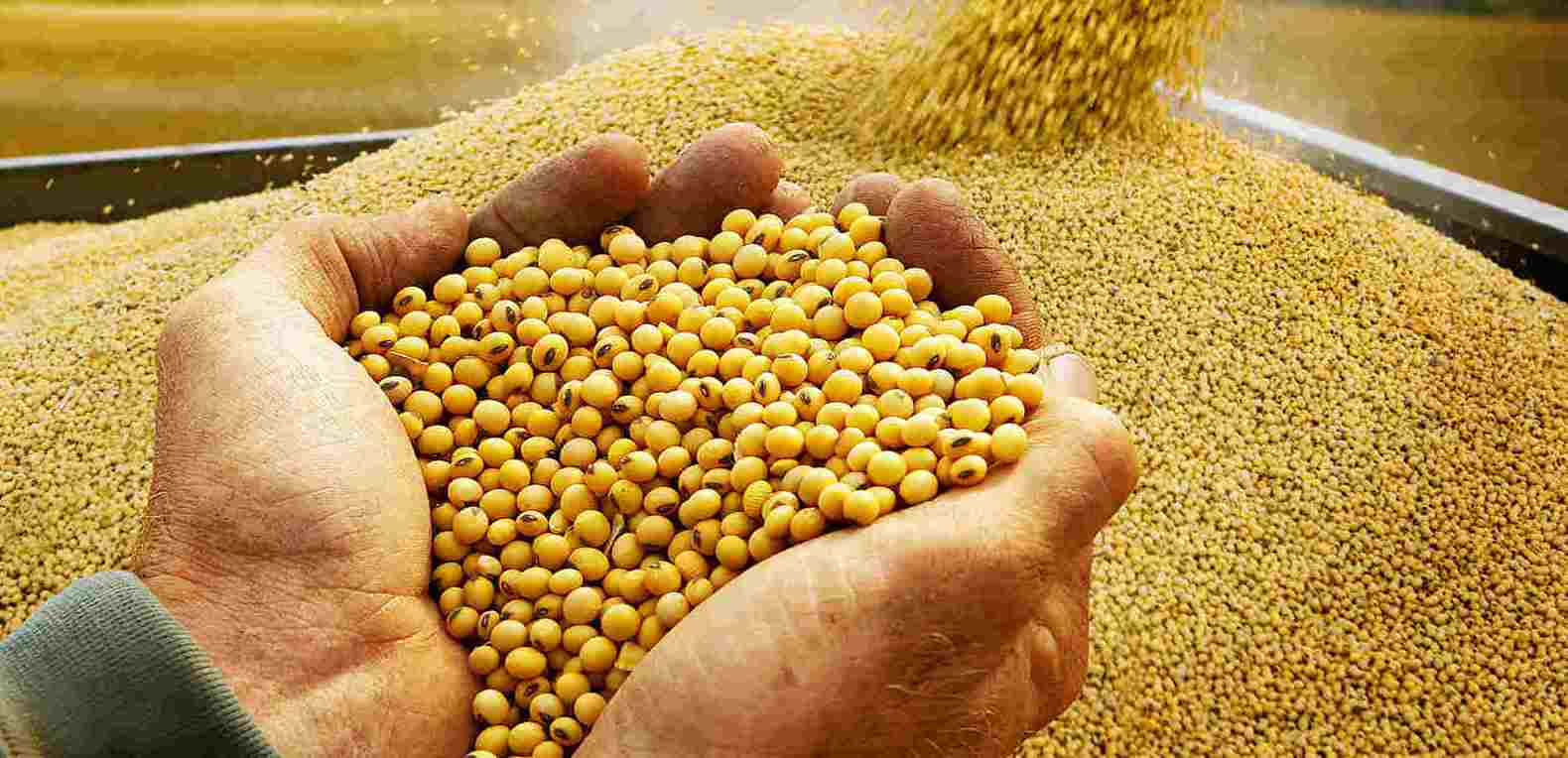Summary
GM soybeans have been found to contain high residues of glyphosate and its toxic metabolite AMPA, whereas industrially grown and organic non-GM soybeans contained neither chemical. The level of glyphosate in the soy was a staggering 19,500 times higher than the level found to have estrogenic effects on breast cancer cells in vitro. These in vitro results need to be tested in live animals, since they may not reflect what happens in a living organism. Such low doses have never been tested and shown to be safe for regulatory purposes.
In a study published in 2013, researchers analyzed the composition of GM glyphosate-tolerant soybeans, industrially grown non-GM soybeans, and organic soybeans. They found that the GM soybeans contained high residues of glyphosate and its toxic metabolite AMPA (mean of 3.3 and 5.7 mg/kg, respectively), but industrially grown non-GM soybeans and organic soybeans contained neither chemical.1
Monsanto itself had previously called these levels of glyphosate “extreme”. It is clear that since the widespread cultivation of GM glyphosate-tolerant soybeans, “extreme” levels of glyphosate have become the new norm.2
The key question is: Are these levels safe to eat? A separate in vitro (laboratory test-tube) study also published in 2013 gives some clues.
In this experiment, glyphosate alone was found to act as an estrogen substitute in human breast cancer cells, stimulating their growth at minute concentrations as low as 10(-12) M. The toxic effect peaked at the higher dose of 10(-9) M and then decreased at still higher concentrations.3
This is an example of a non-linear dose-response: the toxic effect did not increase in a straight line in proportion to the dose but instead decreased as the dose increased. This type of response is typical of endocrine disrupting chemicals (EDCs), chemicals that disturb hormone functioning.4
The results indicated that low and environmentally relevant concentrations of glyphosate possessed estrogenic activity. The study also found that there was an additive estrogenic effect between glyphosate and genistein, a phytoestrogen (plant estrogen) in soybeans.3
The most toxic dose in this experiment, 10(-9) M, equals 169ng/L or 169 ppt (parts per trillion) glyphosate; 10(-12) M equals 0.169ng/L or 169 ppq (parts per quadrillion). Although 169 ppt glyphosate is above the EU maximum permitted level for drinking water – currently set at 100ng/L or 100ppt for any one pesticide active ingredient (5) – clear estrogenic effects were also observed at progressively lower concentrations down to 10(-12) M,3 a concentration which falls within permitted levels in the EU.
In other words, glyphosate caused estrogenic effects and induced cancer cells to proliferate in vitro at a level permitted in drinking water in the EU.
How do these levels compare with the levels found in the GM soy?
Taking the figure of 3.3 mg/kg of glyphosate in the GM soybeans (excluding the AMPA), this is a staggering 19,500-fold higher concentration than the level found to have estrogen-mimicking effects and cause proliferation of human breast cancer cells in test tube experiments.3
In short, the level of glyphosate in the soy was well above that found to have estrogenic effects on the breast cancer cells in vitro.
These in vitro results need to be tested in live animals, since they may not reflect what happens in a living organism.
Unresolved questions
When evaluating these findings, a number of qualifications and unresolved questions need to be considered.
Most importantly, we do not know how much of the glyphosate in the soy is absorbed by the human or animal consumer when present at these levels in food or feed. Since so little is required to have an estrogenic effect in vitro, it is possible that enough can be taken up and accumulate in the body to have hormone-disrupting effects, including stimulation of breast cancer growth. But we do not know that for certain because there are major gaps in our knowledge regarding the absorption, accumulation and excretion rates of glyphosate and AMPA.
The amounts of glyphosate found in the urine of EU citizens in a survey conducted by Friends of the Earth6 may be biologically significant and have a hormone-disruptive effect, especially as exposure takes place over long periods. Again, no one knows for certain.
Although the mean levels found in the soy of 3.3 mg/kg for glyphosate and 5.7 mg/kg for AMPA are below the maximum residue limit set for soy in Europe (20 mg/kg glyphosate), that does not mean that these levels are safe to consume. Also, the official limit does not take into account the increased toxicity of the complete commercial formulations, including adjuvants, over the isolated active ingredient. The formulations have not been tested for long-term toxicity.
These results, taken together, suggest that people who eat food products from GM Roundup Ready crops are eating amounts of these substances that may have toxic – particularly endocrine disruptive – effects. Further animal testing is needed to confirm or refute this possibility.
References
- Bøhn T, Cuhra M, Traavik T, Sanden M, Fagan J, Primicerio R. Compositional differences in soybeans on the market: glyphosate accumulates in Roundup Ready GM soybeans. Food Chem. 2013. doi:10.1016/j.foodchem.2013.12.054.
- Bøhn T, Cuhra M. How “extreme levels” of Roundup in food became the industry norm. Indep Sci News. 2014. Available at: http://www.independentsciencenews.org/news/how-extreme-levels-of-roundup-in-food-became-the-industry-norm/.
- Thongprakaisang S, Thiantanawat A, Rangkadilok N, Suriyo T, Satayavivad J. Glyphosate induces human breast cancer cells growth via estrogen receptors. Food Chem Toxicol. 2013. doi:10.1016/j.fct.2013.05.057.
- Vandenberg LN, Colborn T, Hayes TB, et al. Hormones and endocrine-disrupting chemicals: Low-dose effects and nonmonotonic dose responses. Endocr Rev. 2012;33(3):378-455. doi:10.1210/er.2011-1050.
- Council of the European Union. Council directive 98/83/EC of 3 November 1998 on the quality of water intended for human consumption. Off J Eur Communities. 1998. Available at: http://eur-lex.europa.eu/LexUriServ/LexUriServ.do?uri=OJ:L:1998:330:0032:0054:EN:PDF.
- Friends of the Earth Europe. Human Contamination by Glyphosate. Brussels, Belgium; 2013. Available at: http://www.foeeurope.org/sites/default/files/press_releases/foee_4_human_contamination_glyphosate.pdf.
